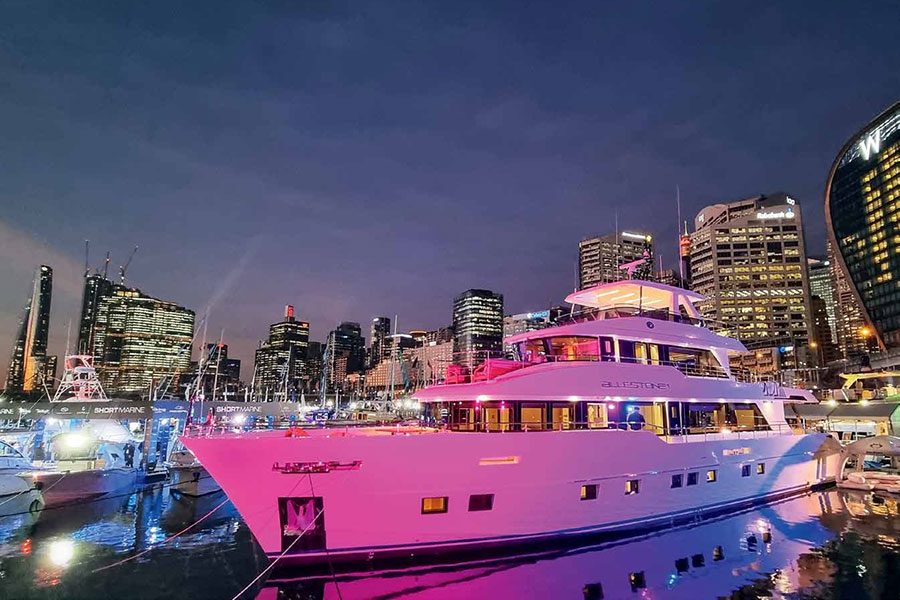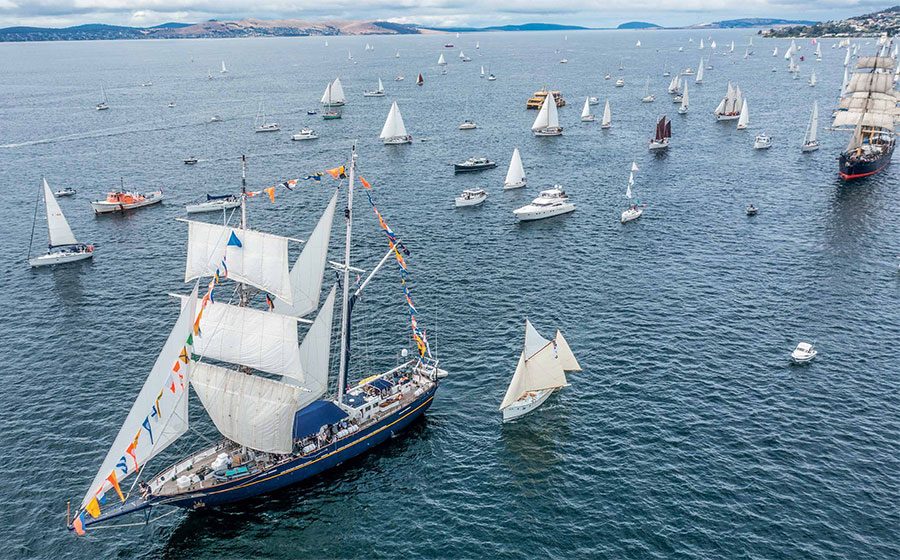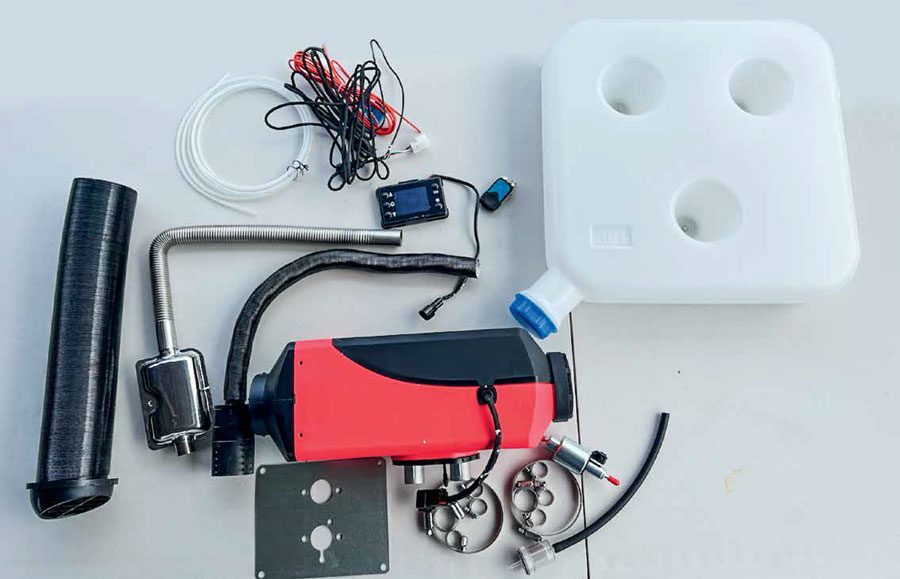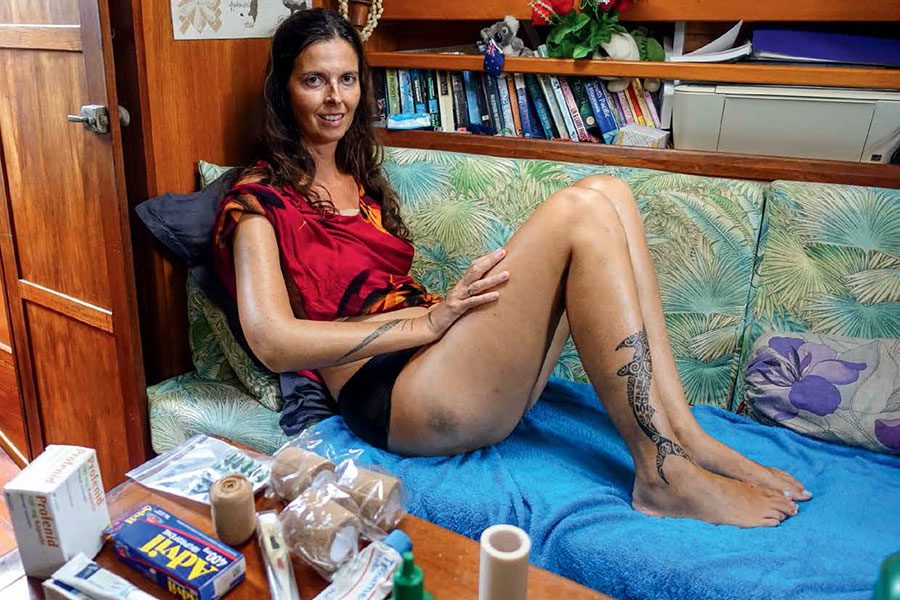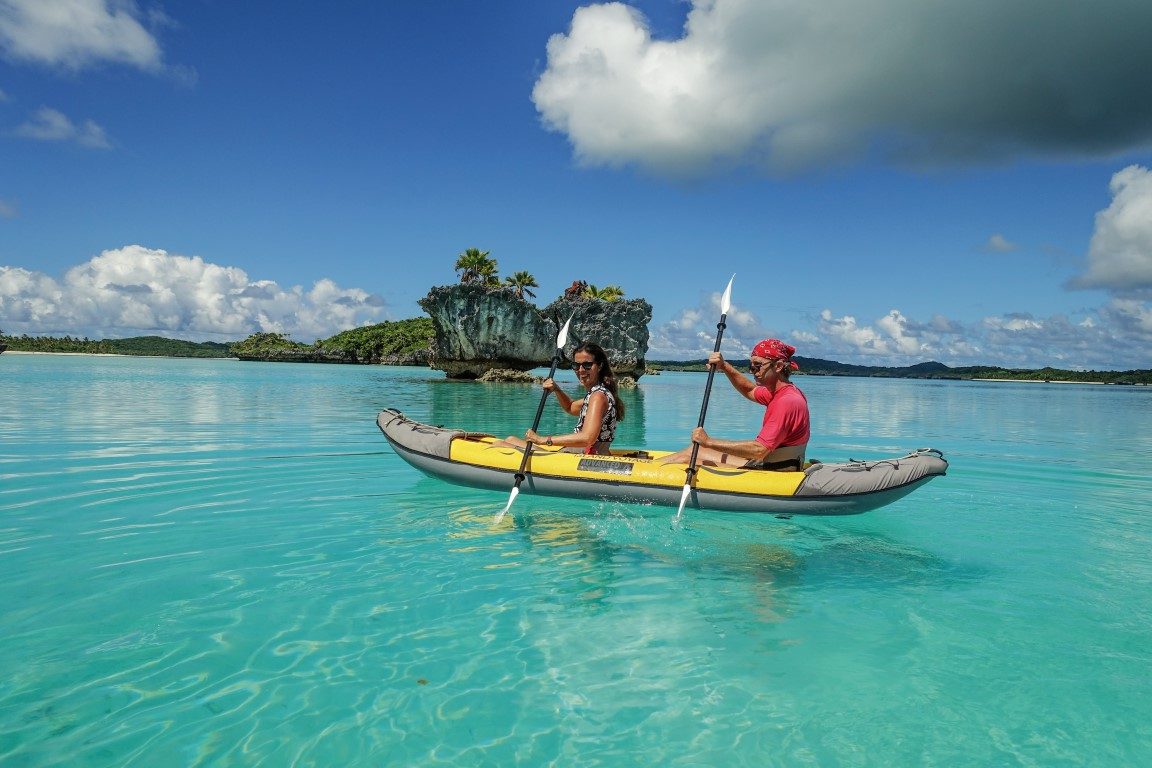

An inflatable kayak has opened up a whole new world of exploration and fun for this year-round cruising couple Birgit Hakl and Christian Feldbauer.
Cruising in Fiji this year we anchored in the beautiful Bay of Islands on Vanua Balavu in the Lau Group, surrounded by picturesque mushroom-shaped limestone islands.
On the day after we arrived we woke to a perfectly calm morning with the fantastic landscape mirrored on glassy calm seas. We took Pitufa on a scenic tour through the bizarrely-shaped maze, anchored in a tiny bay, went snorkelling on a nearby reef and flew our drone. We posted pictures of that perfect day on our blog and got raving comments of people wishing they were with us in that amazing setting.

What they didn’t know was that a stiff southeasterly started blowing the very next day and kept whistling for almost two weeks. The churned-up water was too murky for fun snorkelling and the drone got grounded by the gusty wind for safety reasons. We’d usually enjoy some shore activities in cool weather, but the limestone islands are too spiky to climb up and there are no paths through the dense vegetation. There’s always a long to-do list of boat projects for windy and rainy days, so we dived into maintenance. But after a few days without getting out we were suffering a bad case of cabin fever. Just then a Kiwi family paddled by in their kayak and we realised what an important gadget we were missing on Pitufa!
Back in the land of internet we immediately ordered a kayak. Ella our Advanced Elements kayak arrived soon after and, so far, we haven’t found a single disadvantage to having her as a new crew member. It’s pure joy to move about in nature, propelled by our own muscle power and feeling the sun, wind and spray on our faces while paddling to a sandy beach or pristine reef!
More fitness for boaters
As year-round cruisers, we don’t do enough for our fitness. On passage, bursts of activity (some quick winching when reefing) are followed by long phases of inactivity, just holding on in bad weather and lazing around in calm seas. Everything on board is located within reach or at least within a few metres, so there aren’t many steps to count (even if we wore a watch with a step-counting app).
Circulatory training is vital for both health and well-being, but it’s hard to find regular opportunities for that. Some ambitious sailors can be seen doing yoga on deck in the morning, while even sportier ones go jogging ashore, and of course there are occasional work-out bursts for kite-surfers when a stiff breeze is blowing. But most of us don’t move enough, apart from going snorkelling (where you hardly ever manage to work up a sweat) or taking an occasional hike.

The kayak has changed that: now we get regular exercise taking it to shore or just paddling around the anchorage for fun. Of course, a SUP is also light, can be carried when necessary, and is great to paddle on a glassy-calm lagoon. But the advantage kayaks have over these wobbly devices is their sturdiness. While SUPs are only fun in calm conditions, kayaks can safely be taken out for a ride even when it’s choppy out there, so no excuse for slouching on the couch in rougher weather!
A kayak for safety and as back-up
As they have hardly any draft, kayaks can take you over shallows that dinghies cannot navigate. If it gets too shallow even for the kayak, you can always just pick it up and carry it for a stretch before paddling on. Schlepping a dinghy would be cumbersome, but a lightweight kayak poses no problem at all on such occasions.
Trying to land a dinghy in rough conditions on a rocky coast is a risky business and leaving the dink anchored out in possibly breaking waves leaves an uneasy feeling while lingering ashore. It’s much safer to take the kayak in such conditions, as we can simply carry it out of the danger zone and leave it in a safe place while we are gone.
Kayaks are also great in areas with a large tidal range. Have you ever left your dinghy tied to a tree at high tide and returned to find it high and dry? After dragging the heavy RIB over rocks and slippery mud towards the receding sea a few times, we have learned to look at the tide-table before heading ashore, but you can’t always time your shore visits according to the tide. Even with good planning, we must sometimes anchor either far out at low tide (and have to swim to the dink at high tide) or carry the dinghy back to sea later. A lightweight kayak can much more easily be carried to shore or back out to sea at low tide.

It’s also reassuring that we’d have some alternative means of transport in case some misfortune should happen to the dinghy (not, touch wood!). If the dinghy has to stay on deck for a few days to let the glue on a repair fully cure, we can still venture out with the kayak. If the dinghy gets blown away, we could at least go out and search for it. In the worst-possible scenario of a lost dinghy, the kayak would be a vital means to go ashore and get some shopping done.
Environmental considerations
Apart from some gentle splashing and an occasional curse when it won’t stay on course, a kayak glides along soundlessly. It’s a wonderfully serene way to explore a remote shoreline and we get to see much more wildlife than we would from our dinghy with its noisy outboard engine. Powered by MP (muscle power) instead of HP (horsepower), a kayak is an emission-free, pollution-free alternative to petrol or diesel power. Sailing to a destination and then kayaking when we get there allows us to be perfect eco-tourists, with a zero carbon footprint. In times of high fuel prices, using the dinghy less often also means that we are going easy on the cruising kitty by paddling instead of motoring.

Instead of buying two kayaks for the two of us, we decided to get a two-seater, and yes, manoeuvring the little boat to an agreed-upon destination can sometimes lead to arguments about tactics, techniques, and navigational options, but we have always made it there and – more importantly – back home again by working together. We can therefore recommend paddling a double kayak as one way for couples to improve communication and cooperation!
We opted for an inflatable version, because Pitufa’s decks are cluttered enough without another gadget tied to the railing. Our two-person Advanced Elements kayak weighs only 16kg and – once deflated – fits into a carrier bag easily stored below deck on passages.

